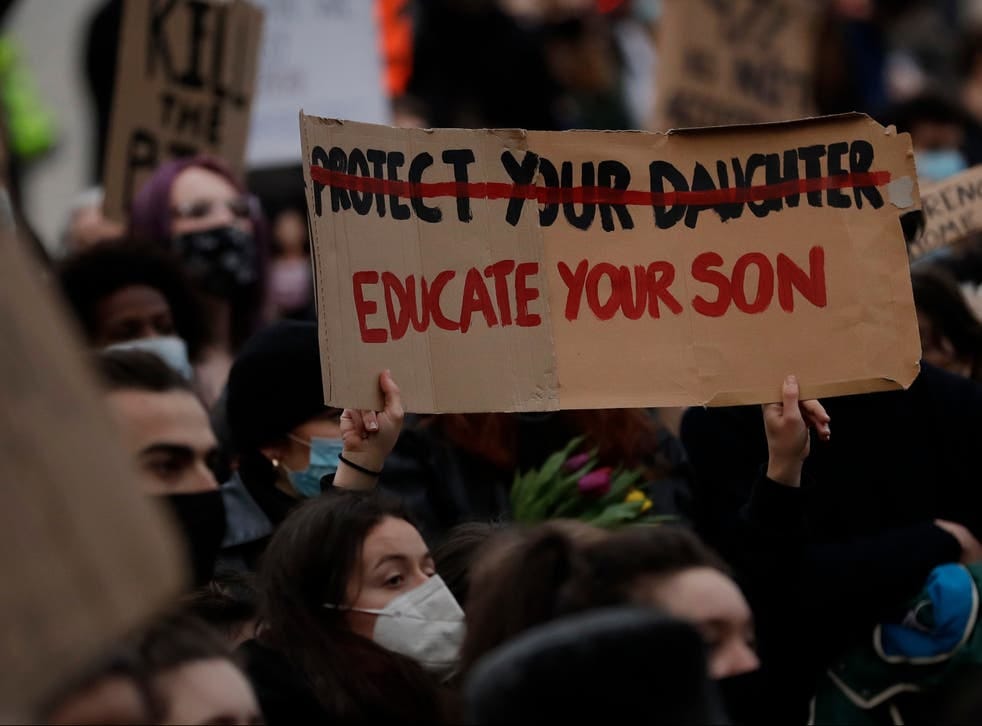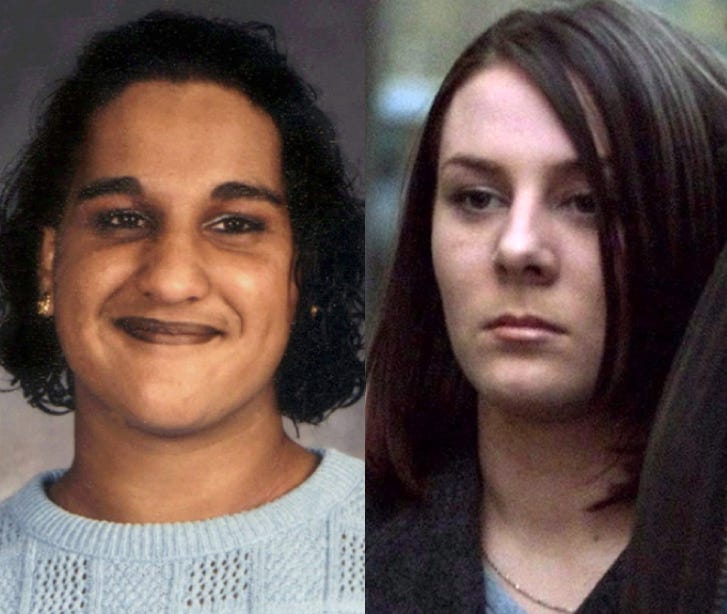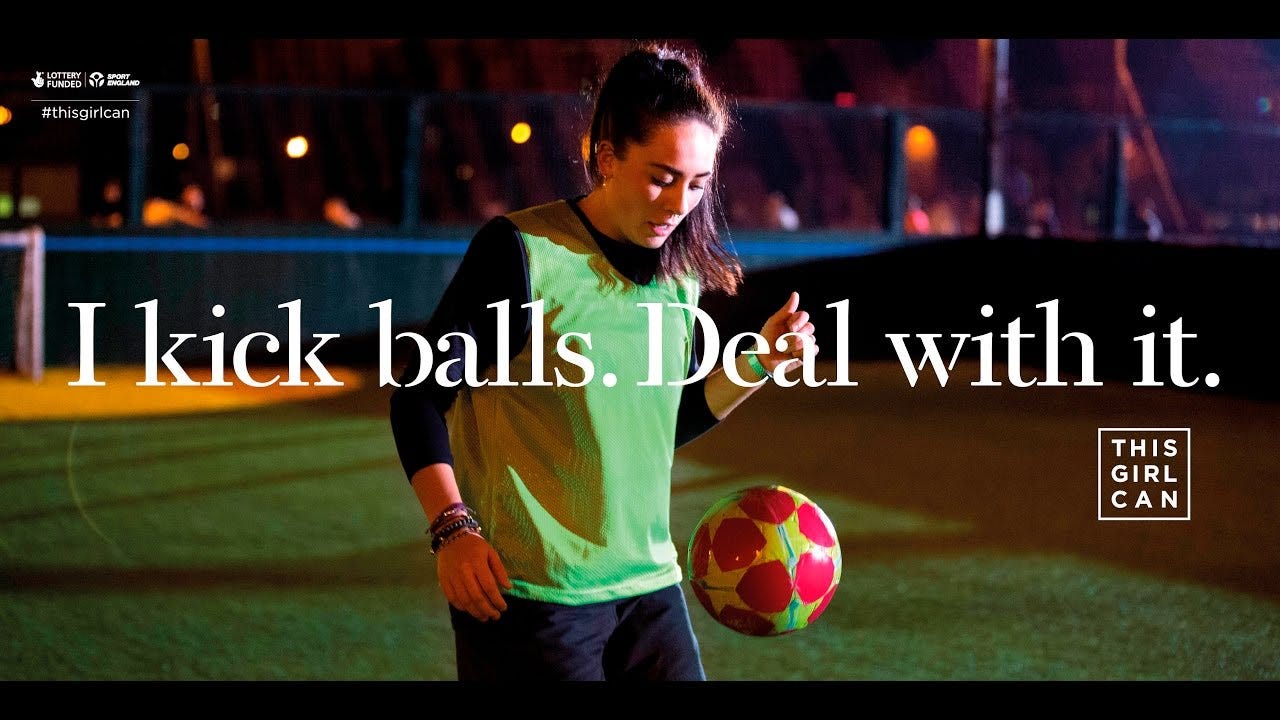Eight Teen Girls Kill a Homeless Man in Toronto
And Canada’s state broadcaster insists there’s nothing to see
When I was 15 years old, I inadvertently angered a group of mean girls who hung out at the roller skating rink I frequented. They thought I was trying to steal the boyfriend of one of them (I was not), and as a result I spent a terrified month awaiting a promised physical beating. The ambush never occurred, but for weeks I was taunted, threatened, and periodically knocked down at the rink.
Though I was never physically violent, I was not a very nice girl. In the tenth grade, my five best friends and I were crude-talking self-styled renegades in jean jackets and boots who took pleasure in causing a ruckus in shopping malls, sometimes choosing a random target for mockery. We once drove a quiet young man off a bus with a campaign of rude comments, overt whispering, and loud laughter for no reason other than to pass the time. We spent Hallowe’en night in 1980 stealing and smashing pumpkins from people’s doorsteps and chalking sidewalks with our insignia, F.O.G., which stood for Forever Our Gang.
All I can say about this shameful period, which lasted close to a year, was that the desire to prove my belonging to a group of tough girls whom I adored was for a while stronger than the conscience and desire to be my best self that eventually reclaimed me. I would never have done on my own (or even thought of doing) the reckless and sometimes cruel acts I participated in. Yet, inspired by my friends, the meanness we enacted seemed less tawdry and disgusting than romantically rebellious.
Reading feminist theory at university, I suppressed memories of my own and other girls’ cruelty, letting it fade into the background, ringed round with convenient justifications about disempowerment. Memories of that period, though, have often come back to me in recent years as I have thought about the myth of female innocence favored by feminist ideologues and colluded in by most men and women today. Our society has enormous trouble admitting the reality of adolescent female cruelty.
I thought of mean girls again last week while reading about the recent murder of a homeless man in downtown Toronto by a group of teenagers, all female, who were looking for an alcohol-fueled good time. From the little that police have said on the subject, the girls seem to have met online and not to have known the man they attacked and killed. According to an eyewitness report, the teens—aged 13 to 16—went after the man’s liquor bottle, beating and stabbing him to death when he resisted. The attack occurred around midnight on December 18.
News reports about the incident have consistently sought to deflect attention from the violent girls, whose names will possibly never be known, and minimize outrage on behalf of the murdered man. It is impossible to imagine similar reports about the motiveless murder of a homeless woman by eight teen boys on a heartless rampage. On the contrary, I suspect we would be hearing a great deal about “male violence.”
In a substantial report by the CBC, Canada’s state broadcaster, we’re told very little about the girls, how they met, what their backgrounds were, and what they did on the night in question. Though police say the girls met online, they say nothing else, though they must have fairly quickly tapped into online communications between them and their social media activity. Was the violence planned? Had the girls engaged in online harassment? Had they spoken about beating people? Surely the incident did not occur in a vacuum.
It is briefly mentioned that three of the girls were known to police before the murder, but the nature of the interactions is withheld. Had they been violent before? Details that would heighten pity for the murdered man and anger at the girls—the precise nature of his injuries, his actions on that night and during the attack—are minimized. I wouldn’t be surprised if eventually the slant on this story is that the girls themselves are also, in some sense, victims.
Commentators quoted in the report expressed their shock less at what was done to the man (though there is some general concern for vulnerable homeless) than that it was done by girls. The investigating officer is said to have found the crime unlike anything he’s investigated before. “I can’t recall a situation where eight females have been involved in something like this.” Their parents too, the officer mentions irrelevantly, were “shocked. Probably like getting hit by a Mack truck.” The statement is startling in its misplaced sympathy.
An assistant professor of sociology is trotted out to assure readers that there’s no pattern and no cause for generalizing about girls’ violence. To do so, she suggests, would be to engage in a “moral panic,” an irrational fear. It’s hard to imagine anyone cautioning against a “moral panic” in a case with male assailants and a female victim. In fact, female victims, the sociology professor makes clear, are what we should be thinking about all the time, even when the deceased is a man. “Girls are more likely to be the victims of violent crime than they are likely to be perpetrators of violent crime” she is quoted as saying, and “There’s no reason to believe this is part of a trending violence among young girls.”
But surely girls’ violence doesn’t have to be a part of a rising trend to be significant—especially when the official story is that it’s boys, not girls, who are violent. According to the sociology professor, “Girls commit half the amount [sic] of crimes that boys have committed.” A moment’s reflection will show that this statement (which I presume refers to violent crime) isn’t as definitive as she seems to think. If girls’ violence is minimal to non-existent, then boys’ violence must be minimal too: double a tiny number is still very small. And if boys’ violence is significant, then half that amount is too significant to ignore.
Even a cursory search on the internet brings to light many cases, just in the last year, of disturbing violence committed by teen girls, whether in gangs or individually. In Auburn, Maine, two teen girls, aged 14 and 16, were charged in a “brutal and unprovoked attack” on a homeless man and woman in which they repeatedly kicked the man in the head, laughing, while a teen boy filmed them. In Boston, a group of ten or more teen girls were caught on cellphone video attacking a woman on the sidewalk, repeatedly punching and kicking her after targeting her for her braided hair (clearly a racially motivated hate crime, though it’s not called that in the article).
In Philadelphia, a 14-year-old girl was charged with third-degree murder and conspiracy in the death of a 73-year-old man who was beaten to death by a group of teens, one of whom recorded the attack on a cellphone. In New York city, a 13-year-old girl faces gang assault charges in the death of a 52-year-old cab driver who was killed for trying to collect the fare from her and her friends. A Boston teen girl, 16, beat her (female) principal unconscious; while two teen girls in Texas lured another girl to a park in order to deliver a concussion-causing “aggravated assault” that a friend filmed for Snapchat. These are just a few cases, chosen almost at random.
It's hard to believe that the investigating officer in the Toronto case is unfamiliar with the sensational teen murder of Reena Virk back in 1997. Virk was killed on Vancouver Island at age 14 for no reason other than that she was an unpopular kid trying to make friends with a nasty group of girls, some of whom she had met in a group home.
On the night of her murder, Virk had been invited to an outdoor drinking party at the Craigflower Bridge, where she was swarmed by girls and brutally beaten, including being repeatedly burned with cigarettes on her face and her hair lit on fire. Her beating was ultimately called off by one of the girls, but two of the original group, Kelly Ellard, age 15, and Warren Glowatski, 16, the only male teen involved, followed Virk as she staggered away and dragged her to the other side of the bridge to administer a second beating. Here, Ellard smashed Virk’s head against a tree and pulled her now-unconscious body into the creek, where she drowned her.
I vividly remember the general disbelief that was expressed about Ellard’s leading role in the murder. While Glowatski was convicted of second-degree murder quite expeditiously, Ellard’s case dragged on for years through numerous appeals and re-trials; the public and members of the judiciary had difficulty seeing her as the remorseless killer she was.
I never found Ellard’s murderousness and lack of remorse difficult to believe. I had known girls like her while I was growing up, girls who were volatile and mean, lacking in empathy, who liked to hurt others and were confident of getting away with violent behavior. They were admired amongst some of my peers. They smashed people and then waited for parents, counsellors, or authorities to excuse them. Forty years later, this is even more the case. No one tells girls not to be violent. Very few teach them to control their emotions or take responsibility for their actions. Overwhelmingly, we hear about teen girls’ vulnerability.
Some feminist commentators such as Egyptian-American Mona Eltahawy even encourage girls to behave badly in order to rebel against “the patriarchy.” Eltahawy has a book, The Seven Necessary Sins for Women and Girls, that urges girls to embrace anger, attention-seeking, and violence. Girls continually see images of female heroines who “kick balls” as an assertion of female power. If that doesn’t work, they can cry and claim abuse. Whatever they do, they know they’ll be largely immune to punishment. Will the eight Toronto teens who killed “Kenney,” as he was known, be held to account for their crime? We don’t like to think about the harm girls can cause, even when it’s staring us in the face.
I don’t suggest we should force all girls to hang their heads in shame or “take responsibility” for female violence—though that’s what would be being pushed if the perpetrators in this murder had been male. I suggest we stop pretending that incidents of teen girl violence are atypical: they’re not, and we do girls no favor with our lies. Girls too, are “human, all too human,” and should be held to a rigorous moral standard.







I found myself getting more and more dejected as I read this. What Janice exposes is so powerful that it literally blinds people to see what is actually happening. This is the force that feminists have unscrupulously wielded for decades. No one sees it. It's an invisible wrecking ball.
Really appreciate your honest telling of your teen experience. So rare to hear a 1st person account and so helpful. Thank you.
It's hard to imagine you as a high school mean girl Janice, but thankfully you outgrew it. And thanks for the links and references to female violence. Here's some for you and others:
Bibi Ayesha is a warlord in Afghanistan:
https://newrepublic.com/article/119772/my-night-afghanistans-only-female-warlord-commander-pigeon
The women of the May 19th Communist Organization bombed the U.S. Capitol: https://www.smithsonianmag.com/history/1980s-far-left-female-led-domestic-terrorism-group-bombed-us-capitol-180973904/
An overview of German women's murderous antisemitism during the Third Reich: https://www.dailymail.co.uk/news/article-2432620/Hitlers-Furies-The-Nazi-women-bit-evil-men.html
White women as arbiters of slavery in the United States:
https://news.berkeley.edu/2019/10/25/white-women-slaveholders-q-a/
This barely scratches the surface but hopefully it's enough of a peek into the wickeder side of women.
Love you!